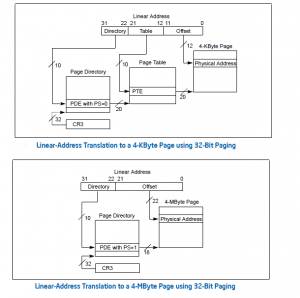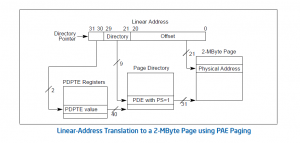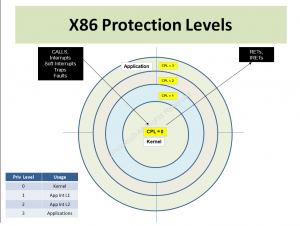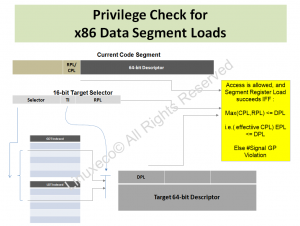When the earth was young, and you were not born, Unca Intel created Real Mode (Read previous article).
Real mode had the capacity to address a whopping 1 MB of Memory (10-bit address space), with each “program” (there were no processes) addressing 64 KB of space (since the registers etc were 16-bits in size. Believe you me, in those days, it was mongo memory. Ah those were the days …
Then came progress, and the first KING of the Microprocessor Family the 80386, and with it 32-bit addressing and 4K paging. Someone had a bright idea at Intel, why not use the 10-bits reserved to index into the PTE as extensions of page-size ? Viola ! And so were born 4M Pages.
However, memory sizes were still set at 4GB (so only 1000 4M pages, no Cigar John !). AND … it will be noted along with 4M Pages came with no new paging hierarchy.
SO .. the next step was to extend Memory sizes … why not ? 52 bits it was (1 TB PAE, go for it John, what the frig !) with a new paging hierarchy, and we got 4K and 2M Page sizes. Did we hear NEW Paging hierarchy with 64-bit PDEs and PTEs ?
Ouuch. No John, No way, we NEED our cake (OLD Paging Hierarchy with 32-bit PDEs and PTEs) and wanna eat it too (Larger memory Addressing, Larger anyway then 4G).
SO .. we created PAE-36 (36-bit Memory Addressing, 64 GB of DDRx addressing with the “old yet modified” 32-bit PDEs and PTEs) with 4M Paging
But John, we TOLD YOU really needed LARGER Page sizes AND … Larger Memory. And lets not worry, Just GO with paging Hierarchy changes , OK ?
And Until, then no kiss-kiss no Bang Bang.
SO .. John created PSE-4M Page sizes with 40-bit Memory (256 GB DDRx Addressing) and called it a Job Well Done. This was the original 4MB Page-Size PSE format extention WHICH was not intended for extending Physical Addresses by using new 64-bit paging hierarchies in the first place, but eventually did wind up doing just so. Amen.
BUT did he not get 1TB memory addressing also ? Thanks for correcting me John. With the new paging hierarchy, (64-bit PDPTEs/PDEs etc) that comes with PA52, Memory addressing extends out to 4TB – 4PB. More than enough for the EXT3/4 file system.And onto extended file systems.
SO then … would one of my esteemed colleagues please enlighten me on the maximum size of a EXT3/4 file system ? And why it is so ? More when we discuss File Systems on this blog. We discuss these concepts during our talks on Linux Kernel Programming Advanced at UCSC-extension, and during the course on Memory Management taught, please note Event Calender on right.





Recent Comments